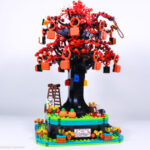Ridley Scott’s House of Gucci presents a cinematic explosion of family drama so exaggerated that viewers might assume it’s pure fantasy. Released in November 2021, the film depicts the tumultuous marriage of Patrizia Reggiani (Lady Gaga) and Maurizio Gucci (Adam Driver) as it unravels alongside the Gucci fashion empire under the weight of internal conflicts and changing cultural tides, culminating in Maurizio’s shocking assassination.
However, the reality of the Gucci Family saga is even more unbelievable than the film portrays. House of Gucci is adapted from Sara Gay Forden’s 2001 non-fiction book of the same title. Forden meticulously chronicled the sensational, real-life ascent and descent of the immensely wealthy Gucci family, a dynasty that once dominated the fashion world. This true story, brimming with Succession-esque familial power struggles, numerous lawsuits, tax evasion scandals, imprisonment, and ultimately, murder, offered a rich and dramatic source for Scott and screenwriters Roberto Bentivegna and Becky Johnston.
While rooted in real events and personalities, certain aspects were deliberately altered for cinematic effect. Bentivegna acknowledged drawing inspiration for the screenplay from visually striking films like Sunset Boulevard, Scarface, and The Godfather, aiming for a heightened, operatic feel rather than strict realism.
“I always wanted with this to feel like the audience was watching a movie,” Bentivegna told TIME. “I didn’t want it to feel like it was in any way a near realistic or sort of kitchen sink drama, I really wanted to feel heightened, and really bold and operatic.”
To amplify the dramatic tone, Bentivegna supplemented Forden’s book with Italian media coverage from the time, emphasizing the “tabloid sensationalism” surrounding the Gucci family’s public feuds, particularly Maurizio’s murder and Patrizia’s orchestration of the crime.
Forden herself recognizes the sensational nature of the Gucci story. Her reporting on the family began during her tenure as chief business correspondent for WWD, and her years of research culminated in her book.
“If I had made the story up like a novel, nobody would have believed it,” Forden remarked to TIME. “But it was all true. It’s a timeless story. There are lessons in it, like blood should be thicker than water. And unfortunately, in this case, it wasn’t.”
Here’s a deeper look into the factual events that inspired House of Gucci.
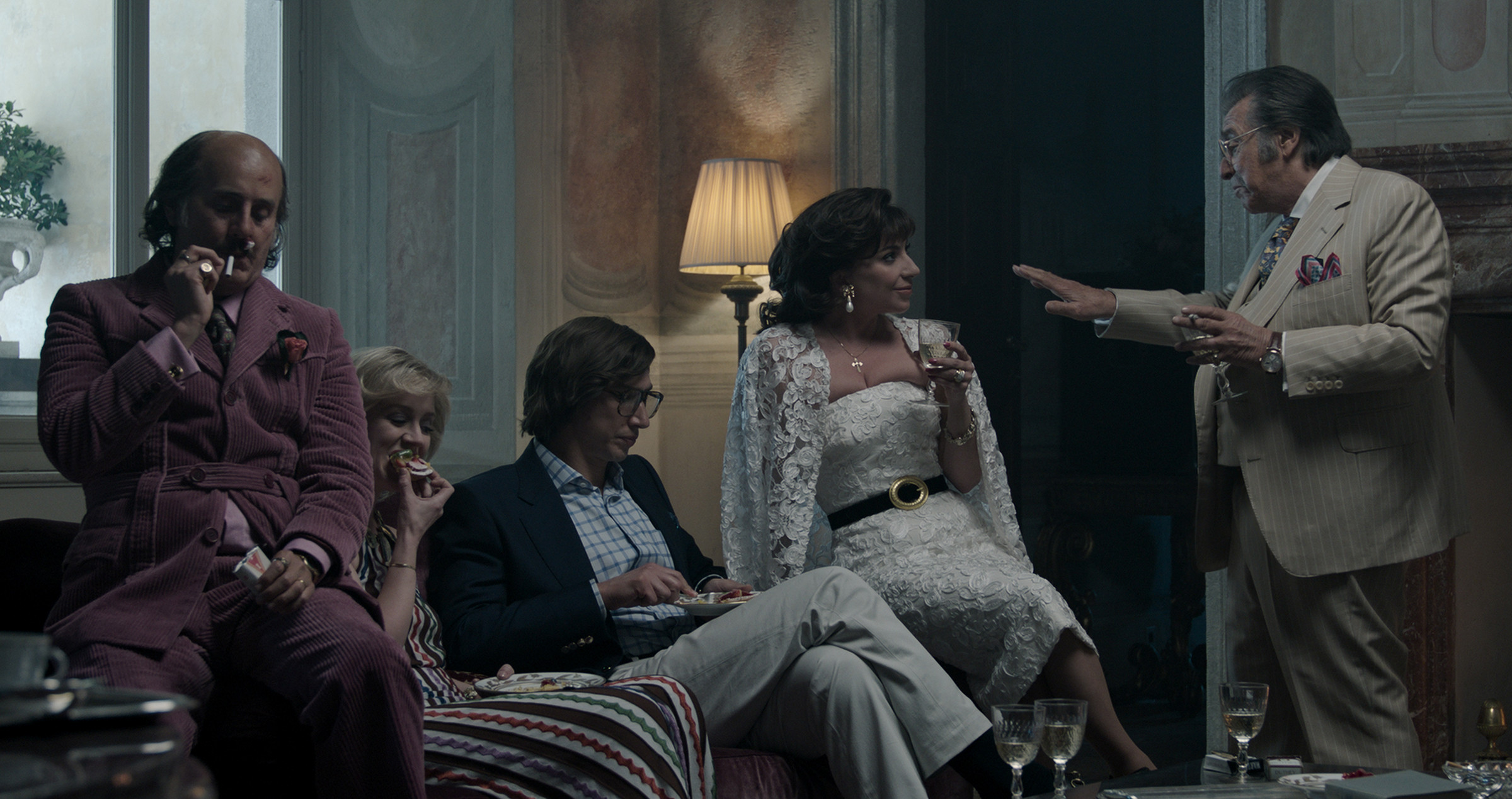 HOUSE of GUCCIHouse of Gucci, showcasing the key players in the Gucci family drama.
HOUSE of GUCCIHouse of Gucci, showcasing the key players in the Gucci family drama.
The Genesis of the Gucci Fashion House and Family Feuds
The House of Gucci’s origins trace back to 1921 when Guccio Gucci established a luxury luggage brand in Florence. His inspiration stemmed from his experiences as a bellhop at London’s Savoy Hotel and his work for a high-end train travel company, experiences that exposed him to the tastes of elite clientele. Guccio’s initial Florence shop specialized in refined leather luggage and accessories, as well as equestrian goods. The small venture rapidly evolved into a thriving family enterprise, expanding with locations across cities and countries, especially with the involvement of his four sons: Vasco, Aldo, Rodolfo, and Ugo (his wife’s adopted son from a previous marriage).
Upon Guccio’s death in 1953, ownership of the company was passed to his three biological sons: Vasco, Rodolfo, and Aldo. However, simmering sibling rivalry soon escalated into open conflict, a pattern that persisted into the next generation and played a significant role in the Gucci family’s eventual decline in the fashion industry.
The family discord reached a critical point with Rodolfo Gucci’s passing in 1983. His son, Maurizio, inherited a controlling stake in the company, which was then struggling under Aldo’s management. Maurizio, believing Aldo’s strategy of mass-producing Gucci items diluted the brand’s luxury image, dedicated the 1980s to legally maneuvering Aldo out of the business and seizing control. This period of family infighting was highly public and acrimonious. Aldo served a prison sentence for tax evasion, and Maurizio fled to Switzerland after being accused of forging his father’s signature to evade inheritance taxes (though initially convicted, he was later acquitted). By 1989, Maurizio successfully gained control of Gucci, determined to restore its prestige. However, by 1993, his lavish spending and the company’s mounting debts compelled him to sell his 50% stake to investors, marking the end of the Gucci family’s ownership and direction of the iconic brand.
Forden points out that while the Gucci family’s exit from the fashion house was particularly dramatic, it reflected a broader trend in Italian fashion at the time. Companies like Prada, Versace, and Armani also grappled with the challenges of transitioning from small family boutiques to global mega-brands.
“Gucci tells the story of many family companies that were struggling to kind of get to the next level and wrestling with these questions of succession,” she explains. “Obviously, they were challenges in the transformation to the next level and Gucci exemplified that in the most extreme and dramatic way. But I was really touched and compelled by Maurizio Gucci himself, who was on this mission to relaunch his family company to restore it to the top tier of the luxury market.”
Forden also highlights Maurizio’s forward-thinking approach, noting that even though he couldn’t maintain ownership, he anticipated the future of fashion brands by being the first to bring in external financial stakeholders to propel the brand’s growth and global presence.
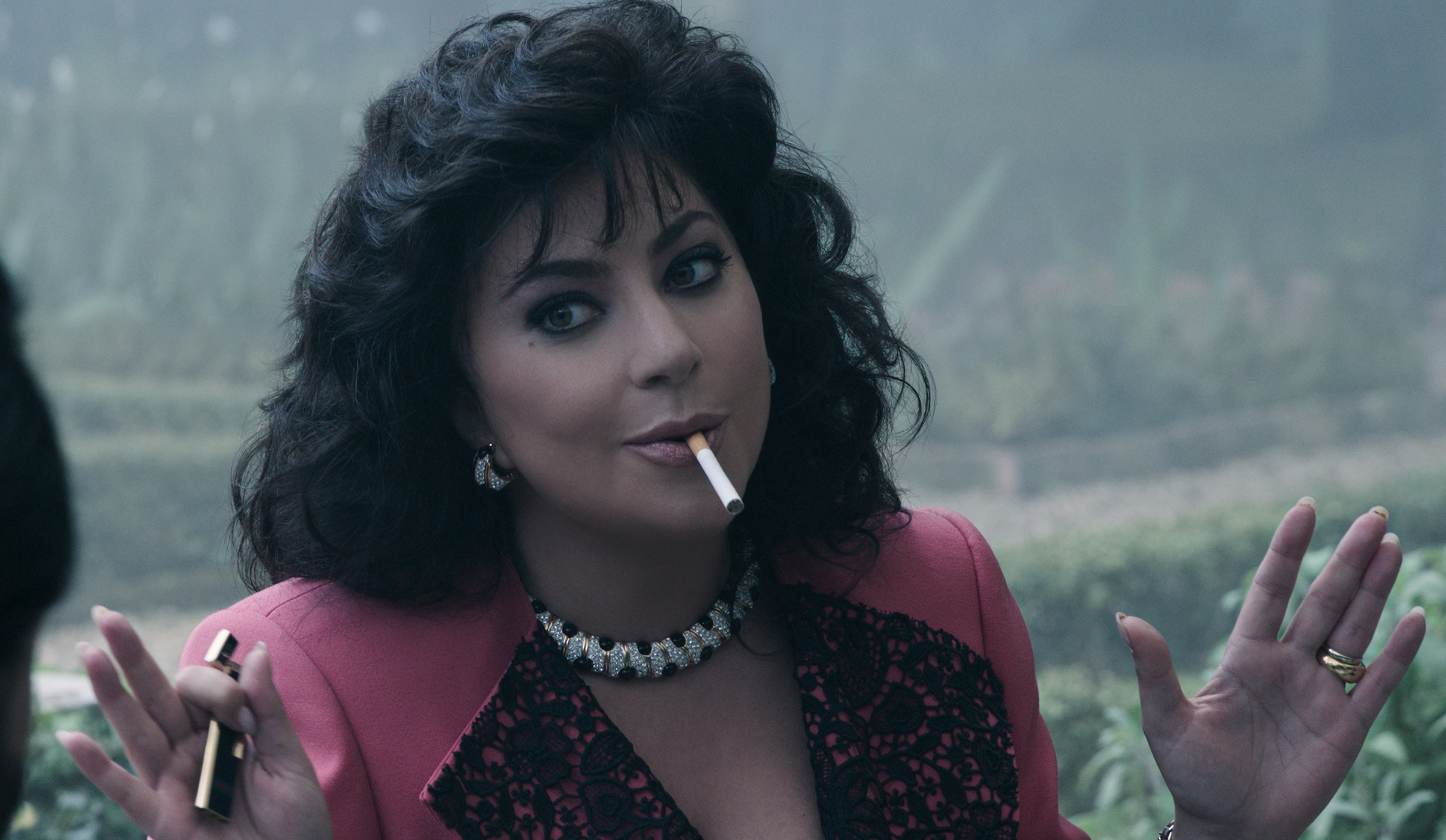 HOUSE of GUCCIHouse of Gucci, capturing her transformation and persona.
HOUSE of GUCCIHouse of Gucci, capturing her transformation and persona.
Patrizia Reggiani: From Social Climber to “Black Widow”
While not a Gucci by birth, Patrizia Reggiani’s name is inextricably linked to the family’s history. Born Patrizia Martinelli, she later became known as “Lady Gucci” during her glamorous years. Her early life was marked by poverty and the absence of her biological father. At age 12, her mother married Ferdinando Reggiani, a wealthy entrepreneur who adopted Patrizia. As a young woman, Patrizia was a Milanese socialite, though her family’s newfound wealth hadn’t fully integrated them into Milan’s highest social circles. According to Forden, Patrizia’s mother hoped her daughter could secure their entry into this elite society.
Patrizia found her opportunity when she met Maurizio Gucci at a party in 1970. He was reportedly captivated by her resemblance to Elizabeth Taylor.
“I met Maurizio at a party and he fell madly in love with me,” Reggiani recounted in a 2016 interview with The Guardian. “I was exciting and different.”
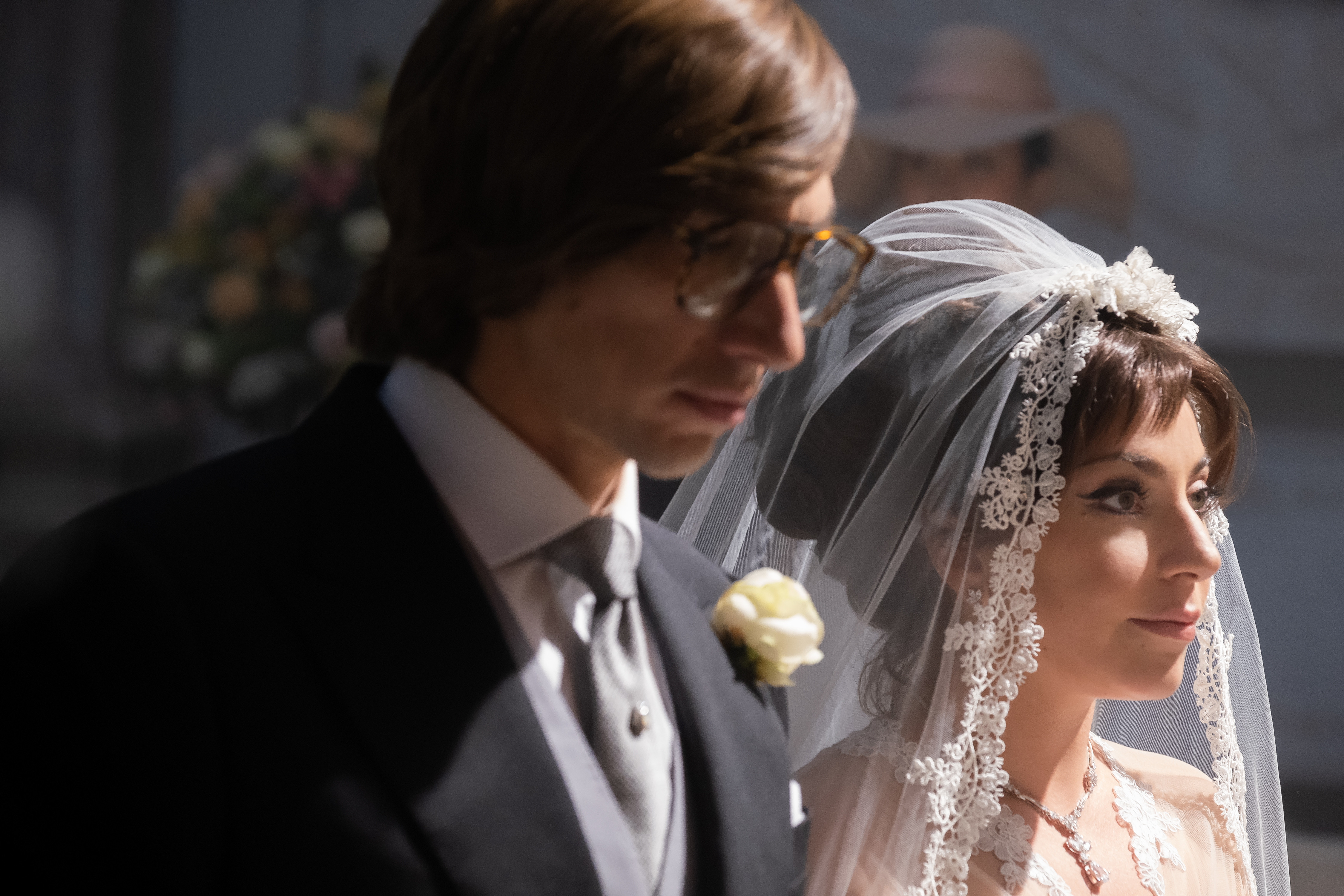 HOUSE of GUCCI
HOUSE of GUCCI
A Marriage of Extravagance, Divorce, and Betrayal
Maurizio and Patrizia married in 1972 after a two-year courtship, but their union caused immediate family friction. Maurizio’s father, Rodolfo, disapproved of Patrizia’s background, viewing her as a social climber, and boycotted their wedding. However, Rodolfo eventually reconciled with the couple after the birth of their first daughter, Alessandra, in 1976 (they had a second daughter, Allegra, in 1981). He even gifted them a luxurious penthouse in New York City’s Olympic Tower, where they lived while Maurizio worked with Aldo in the family business.
In their early marriage, Maurizio and Patrizia immersed themselves in New York’s high society, often seen with figures like Jackie Kennedy Onassis. They were notorious for their lavish lifestyle—chauffeured around Manhattan in a car with the vanity plate “Mauizia,” owning a yacht, and vacation homes in Saint Moritz, Acapulco, and Connecticut.
Patrizia exerted considerable influence over Maurizio in all aspects of his life, including his business dealings at Gucci. Bentivegna suggests Maurizio may have sought Patrizia’s strong guidance because he was raised as an only child who lost his mother young. Patrizia was acutely aware of Maurizio’s more passive nature.
“[Patrizia] famously said that he was like a chair that takes the shape of whoever sits on it,” Bentivegna explains. “So, she as an incredibly sharp and cynical manipulator knew that she had putty in her hands, and she could really mold and play with, but I think it came out of a place of love.”
Their marital problems began in 1983, after Maurizio inherited his father’s controlling stake and initiated a legal battle to oust his uncles and take full control of Gucci. In her Guardian interview, Patrizia claimed, “Maurizio got crazy. Until then I was his chief adviser about all Gucci matters. But he wanted to be the best, and he stopped listening to me.”
Amidst the escalating family business conflicts, Maurizio abruptly ended his marriage to Patrizia. In 1985, after relocating to Milan, Maurizio went on a business trip to Florence and sent a friend to inform Patrizia that he wouldn’t return and their marriage was over. By 1991, Maurizio was living with Paola Franchi, a childhood friend, fueling Patrizia’s jealousy. The divorce was finalized in 1994, with Patrizia receiving a €2.5 million settlement and €650,000 annual alimony, which she famously dismissed as “a mere bowl of lentils.” Despite losing the legal right to use the Gucci surname, Patrizia continued to do so, famously declaring in an interview with La Republica: “I still feel like a Gucci—in fact, the most Gucci of them all.”
 HOUSE OF GUCCIHouse of Gucci, highlighting his business ambitions and personal conflicts.
HOUSE OF GUCCIHouse of Gucci, highlighting his business ambitions and personal conflicts.
The Assassination of Maurizio Gucci
On the morning of March 27, 1995, Maurizio Gucci was gunned down outside his Milan office. He died on the building steps in the arms of Giuseppe Onorato, the doorman and sole eyewitness, who was also shot but survived. Patrizia wasn’t arrested until 1997, two years after the murder, following an anonymous tip to police. It was later discovered that on the day of Maurizio’s murder, Patrizia wrote a single word in her diary: “paradeisos,” Greek for paradise.
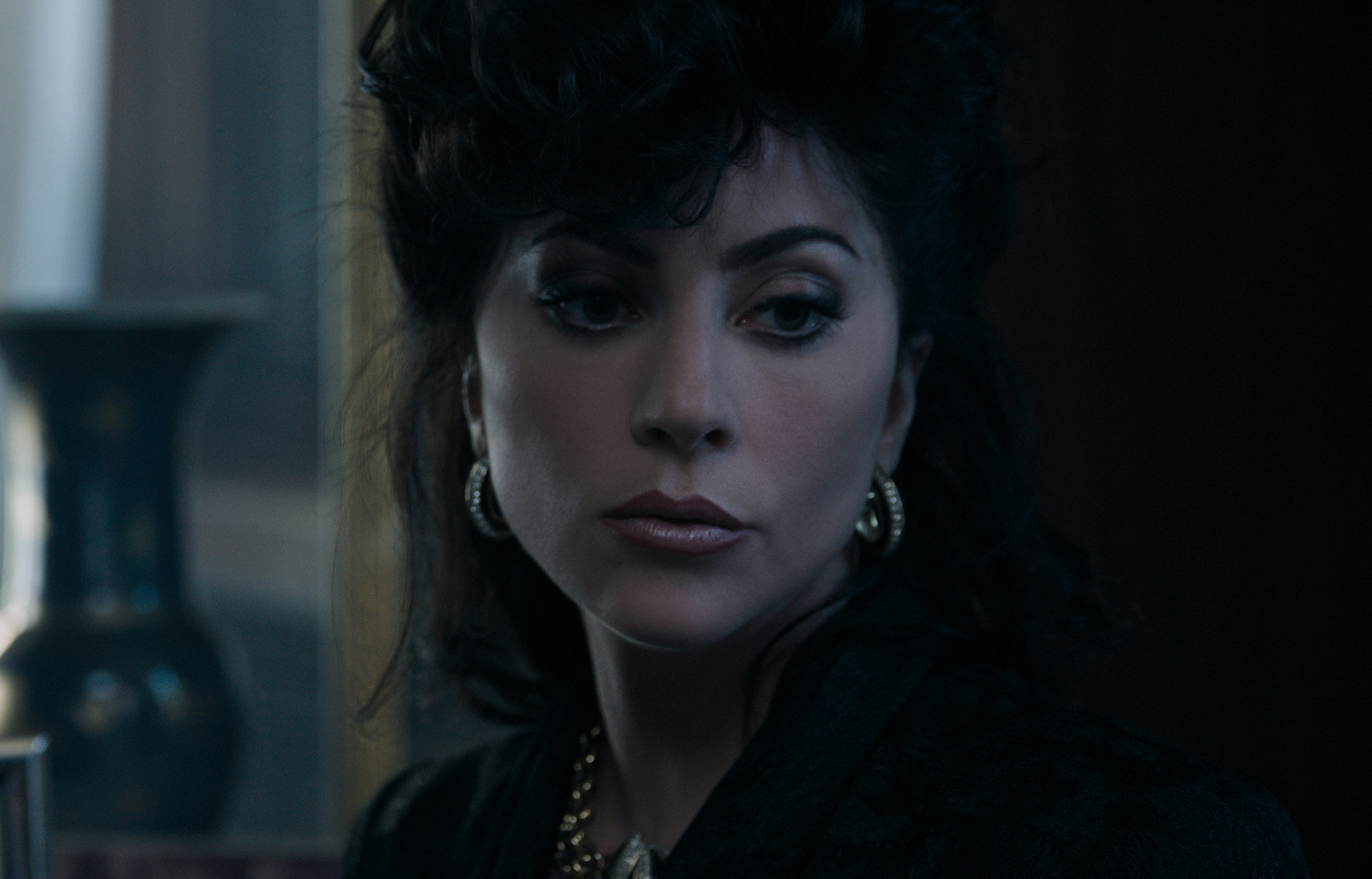 HOUSE of GUCCIHouse of Gucci during a dramatic scene, reflecting the intensity of Patrizia Reggiani’s story.
HOUSE of GUCCIHouse of Gucci during a dramatic scene, reflecting the intensity of Patrizia Reggiani’s story.
The Trial of the “Black Widow” and its Aftermath
Patrizia’s trial became a media spectacle, given the Gucci family’s prominence in Italy. She was quickly branded the “Black Widow,” a label that intensified as the trial progressed. While Patrizia maintained her innocence, the prosecution presented menacing voicemail messages she had sent to Maurizio and Paola. The defense argued Patrizia’s mental instability due to a 1992 brain tumor surgery, claiming it altered her personality. However, three accomplices—Pina Auriemma, Patrizia’s friend and astrologer; Orazio Cicala, the getaway driver; and Ivano Savioni, who hired the hitman and driver—confessed their involvement and Patrizia’s role as the orchestrator. Both Patrizia and the hitman, Benedetto Ceraulo, denied the charges.
In November 1998, Patrizia was convicted of premeditated murder and sentenced to 29 years in prison, though she served only 18. She was eligible for parole in 2011 but refused, preferring prison to work-release.
“I’ve never worked in my life,” she reportedly stated in court. “I won’t start now.”
Patrizia was released in 2016 for good behavior and now works as a consultant for a jewelry firm in Milan, sometimes seen shopping with a parrot on her shoulder. She has since acknowledged her role in Maurizio’s murder, telling an Italian reality TV show that she didn’t shoot him herself due to poor eyesight, stating, “I didn’t want to miss.”
Regarding the House of Gucci film, Patrizia expressed annoyance at not being consulted by Lady Gaga.
“I am rather annoyed at the fact that Lady Gaga is playing me in the new Ridley Scott film without having had the consideration and sensibility to come and meet me,” she told ANSA. However, Bentivegna believes Patrizia is secretly pleased by the film’s creation.
“I think Patrizia is going to love the movie and I think she’s thrilled that it’s being made,” he suggests. “I think she’s incredibly flattered that Lady Gaga is playing her, because she is, to put it mildly, self-absorbed.”
The Gucci Family’s Displeasure with House of Gucci
Following the film’s release, the Aldo Gucci family issued a statement via ANSA, criticizing the movie for presenting “one narrative that is far from accurate.” The family criticized the production for not consulting them before portraying Aldo and other family members, and objected to Patrizia Reggiani’s depiction as a feminist figure battling a male-dominated corporate environment. Variety reported, citing anonymous sources, that despite the strong statement, the Gucci family would not pursue legal action against Scott’s production company or Warner Bros.
The Gucci family’s full statement, translated from Italian, reads:
The Gucci family takes note of the release of the film “House of Gucci” with some bewilderment because, although the work claims to want to tell the “true story” of the family, the fears aroused by the trailers and interviews released so far, are confirmed: the film carries one narrative that is far from accurate.
The production of the film did not bother to consult the heirs before describing Aldo Gucci – president of the company for 30 years – and the members of the Gucci family as thugs, ignorant and insensitive to the world around them, attributing notes to the protagonists, events, tones and attitudes that never belonged to them. This is extremely painful from a human point of view and an insult to the legacy on which the brand is built today.
Even more censurable is the reconstruction that becomes mystifying on the edge of the paradox when it comes to suggesting indulgent tones towards a woman who, definitively convicted of having been the instigator of the murder of Maurizio Gucci, is not painted only in the film, but also in the statements of the cast members, as a victim that was trying to survive in a masculine and macho corporate culture.
This couldn’t be further from the truth. Moreover, in the 70 years of history in which it was a family business, Gucci was an inclusive company. Indeed, precisely in the 1980s – the historical context in which the film is set – women were in different top positions: whether they were members of the family or extraneous to it, they included the president of Gucci America, the Head of Global PR & Communication, and a member of the board of directors of Gucci America.
Gucci is a family that lives honoring the work of its ancestors, whose memory does not deserve to be bothered to stage a film that is not true and that does not do justice to its protagonists.
The members of the Gucci family reserves every right to protect the name, image and the dignity of their loved ones.


